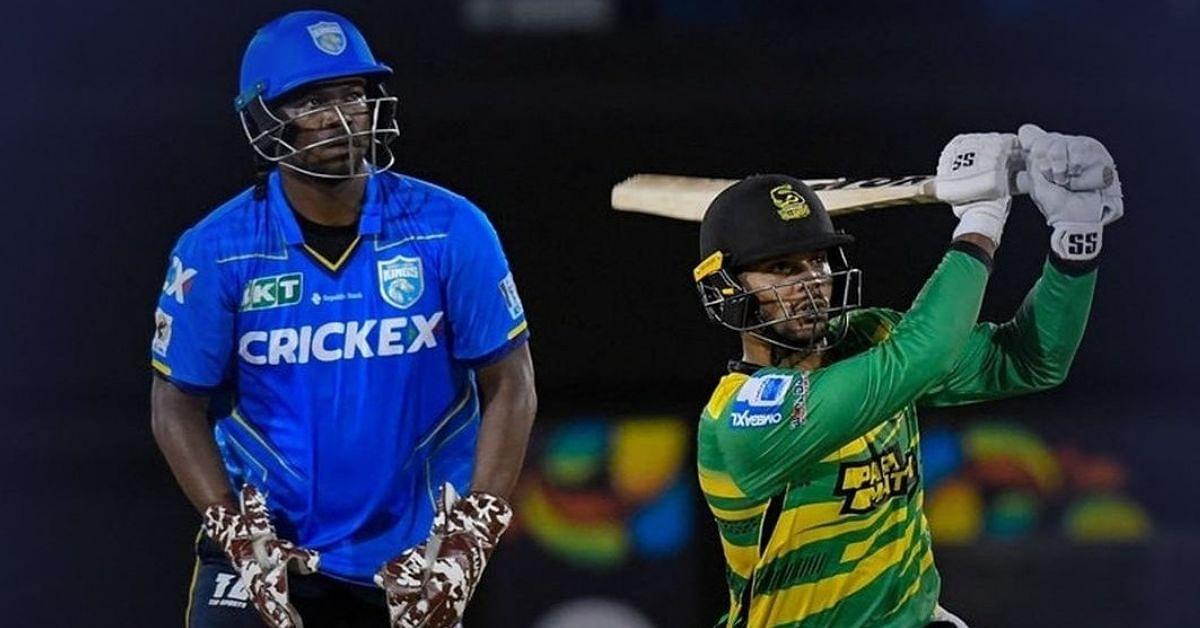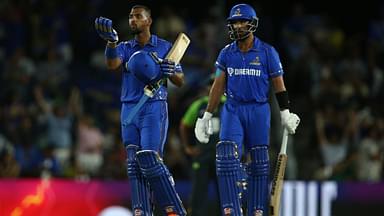Slow over rates in the T20 format puts on display a can of worms. With matches going well above four hours across tournaments, inflexible and immediate steps are the need of the hour in order to fix the issue. While the ICC (International Cricket Council) implemented a new rule to solve the problem last year, Caribbean Premier League has gone one step forward by announcing a “Red Card” rule as a possible solution.
Advertisement
In January 2022, ICC had come up with a fielding-related penalty if the 20th over is not started by the 85th minute. Since the basic nature of the T20 format is synonymous with fast-paced entertainment, commonly-used practice of wasting time unnecessarily is problematic, to say the last. Hence, it will be interesting to note if the new CPL 2023 rule will help in fixing the issue or not.
Umpires To Issue Red Cards As Punishment Under New Over Rate Rule In CPL 2023
According to the new over rate rule, if a fielding team is behind the over rate before the start of the last over, it will lose a fielder. The umpire will show a red card to the player after consulting with the fielding captain. Additionally, just two players will be allowed to field outside the circle. This will make a bowler’s job extremely daunting.
In T20Is, the rule is implemented only before the 20th over of a match. However, in the CPL, it will be implemented in three stages. If a team is behind before the 18th over, one additional fielder will come inside the circle. If it is behind before the 19th over, two additional fielders will come inside. The rule for the last over is already mentioned above.
The third umpire will closely monitor the timings of the overs. CPL management has also released the timelines for the same. Additionally, if a batting team is found guilty of wasting time, it will be given a penalty of five runs on each such instance.
| S No. | Over | Completed Within |
| 1 | 17 | 72 minutes |
| 2 | 18 | 76 minutes 20 seconds |
| 3 | 19 | 80 minutes 45 seconds |
| 4 | 20 | 85 minutes |
Speaking of the Indian Premier League, 20 overs should be completed within 90 minutes. If a team fails to do the same, it is fined heavily. The captain gets fined INR 12 lakh for the first offence. For the second time, he is fined INR 24 lakh while all his teammates are fined either INR 6 lakh or 25% of their match fee (whichever is lesser).
There is an INR 30 lakh fine and a game ban for a captain’s third breach, whereas the rest of the members get fined either INR 12 lakh or 50% of their match fee (whichever is lesser).
Has A Red Card Been Used In Cricket In The Past?
It is to be noted that this is not for the first time when Red Card and cricket have joined hands, at least on paper. That being said, some suggestions in the past weren’t followed by successful implementations.
Historically, there were talks of bringing a Red Card into play not to amend slow over rates but to rectify unprincipled on-field behaviour of the players. In 2017, former England captain Mike Brearley had revealed that more than 40% of the umpires in England agreed that they considered giving up their jobs because of verbal abuse.
Interestingly, legendary bowler Glenn McGrath was shown a Red Card in the first-ever T20I between Australia and New Zealand. With the Black Caps requiring 45 runs off the last ball, McGrath and then-captain Ricky Ponting had tried to recreate the infamous underarm delivery incident.
20. Glenn McGrath bowls an underarm delivery in the very 1st T20 International match.
McGrath decided to have some fun and bowled an underarm delivery to Kiwi batsman Kyle Mills and is shown red card by the umpire Billy Bowden. pic.twitter.com/6g9chxY9Re
— Mohit (@MohitRohitian) May 25, 2021
As a result, umpire Billy Bowden didn’t hesitate in flashing a red card to McGrath as underarm bowling is illegal in cricket. That being said, there is no provision to punish a cricketer with a red card in international cricket at the moment.



